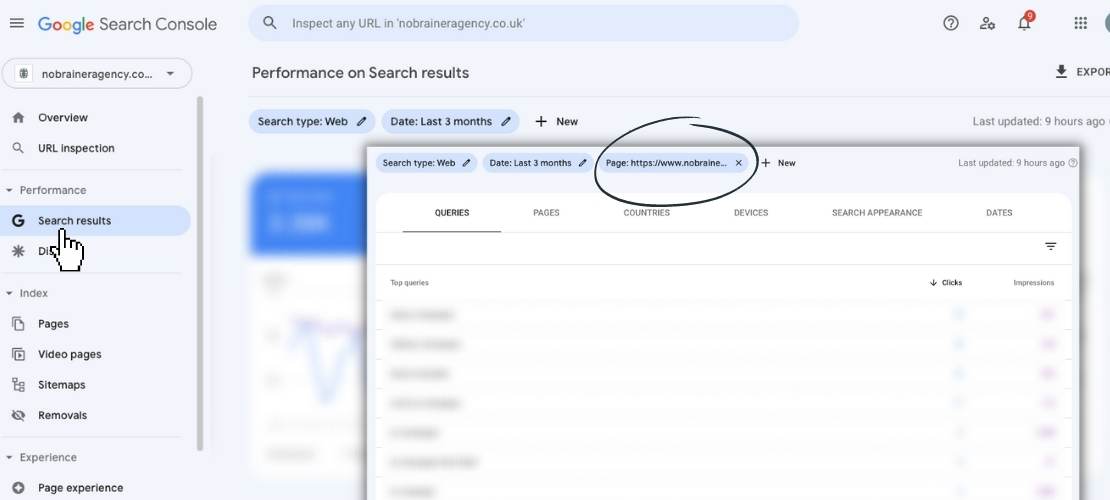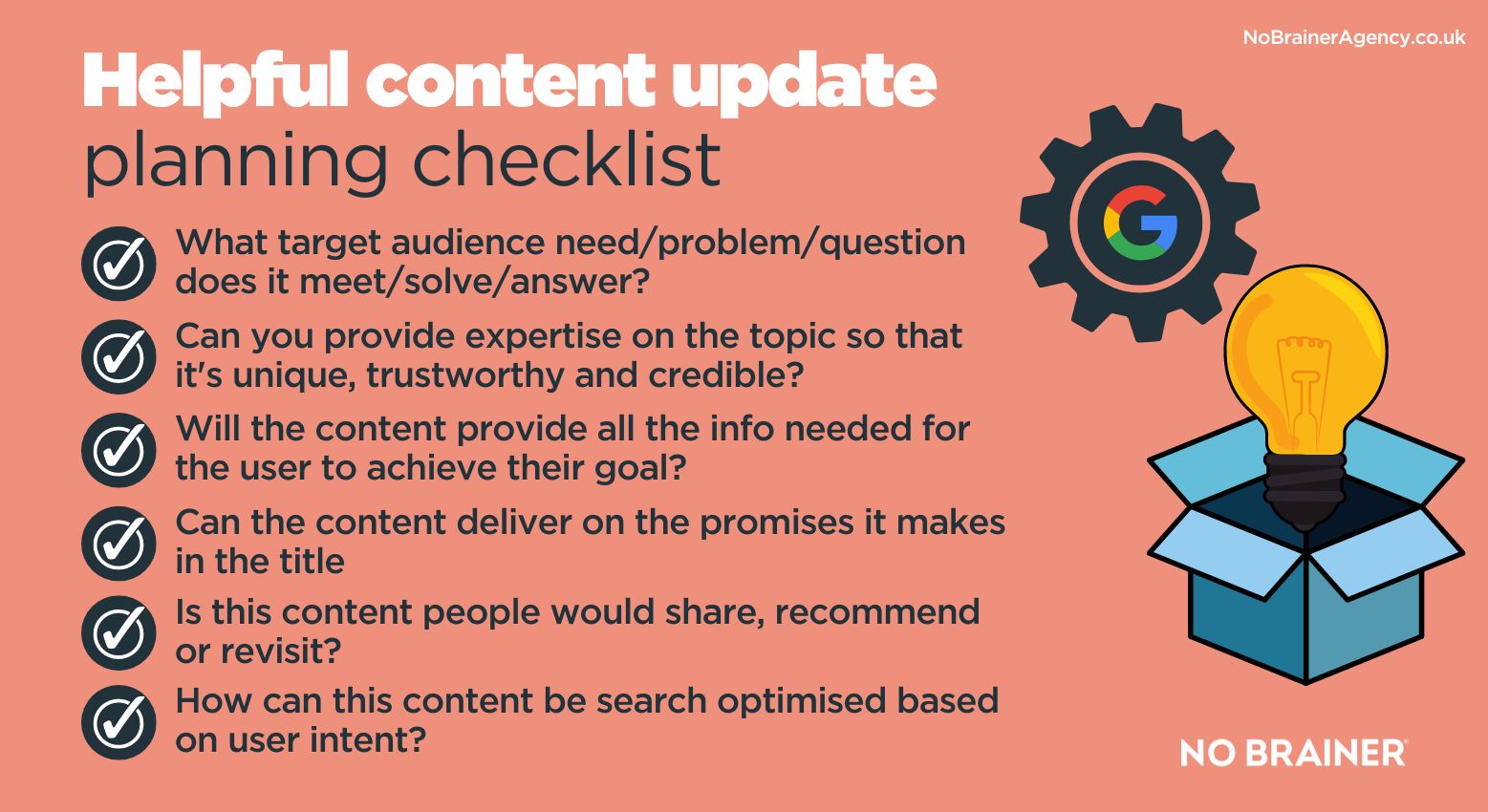Most websites have content that isn’t reaching its full potential and there can be many different reasons for this. It’s often tempting to just write off existing content that isn’t performing as hoped and focus on creating new content instead, but that isn’t necessarily always the best use of time or resource. Taking some time to assess your content strategy, as well as existing and legacy content and then making some changes can be a much more cost-effective way of achieving great results such as:
- Ranking in search engine results for relevant terms
- Increasing conversions
- Attracting links from relevant, high-authority websites
- Getting engagement from readers
- Tangibly moving potential customers forward on their buying journey
We’ve identified four key steps to supercharge existing website content so that it starts delivering ROI.
1. Identify the potential in existing underperforming content
The first stage of any content revamp project is always going to be identifying the specific pages, blogs or content assets that aren’t performing as they should be. For some legacy content, it might be that there was no specific content strategy in place when it was originally published, so it doesn’t have a clear objective or play a definitive role in the user journey. For other pieces, it might be that it used to perform well and no longer does, or simply isn’t focusing on quite the right area for the target audience. Alternatively, it could be performing pretty well, but there is potential for even more to come from it.
Identifying which pieces ‘should’ be doing better isn’t always straightforward, especially if you weren’t involved in its creation originally, but here are a few metrics that you can look at to discover content that could benefit from being updated or reworked.
Look at what the page is ranking for currently
Take a look in Google Search Console at your individual pages and their average rankings for queries. Any pages that currently rank somewhere between positions 5-30 could potentially be improved with some small tweaks. They are clearly hitting some of Google’s ranking factors in order to be in the positions that they are. However, for some reason, aren’t deemed the best available option by Google.
Look at pages that get decent organic traffic, but low engagement and/or conversions
Take a look at all pages in Google Analytics. Depending on the purpose of a specific page, it may or many not be a page that you would expect to bring conversions. That won’t always be a direct sale. A conversion could be getting a user to sign up to a newsletter, to fill out a contact form, or to download an asset. However, more top-of-the-funnel type content, such as many blog posts, are not really intended to convert as such, but simply to move people along in their journey towards a conversion at a later time.
Therefore, engagement levels can give good clues as to whether these pages are doing all that they can to meet the audience needs. Looking at the bounce rate and average time on page (compared to other pages on the site of the same type) can help show if people are finding the page engaging and useful, and if they are visiting other pages on the site after this one. Pages with lots of landing traffic but poor engagement metrics can be prime candidates for looking at for a potential content revamp.
2. Look at why the content is not already delivering ROI
Finding low-performing pages is one thing, working out WHY they aren’t performing is another matter and isn’t always straightforward. Sometimes, search behaviour changes over time in a way that couldn’t have been predicted. However, some of the areas that can give you helpful information about why things aren’t working optimally right now include:
Are you targeting realistic keywords?
It’s worth reviewing the keywords you’re targeting with the existing content and whether top rankings for that term are actually realistic for your business at this point in time. Who is actually ranking well for the term now? If you’re competing with Wikipedia pages, government websites, educational faculties or official bodies of any kind, the chances are that you’re never going to top them. If you’re a smaller or newer brand with fairly low online authority, competing on generic and highly competitive terms simply isn’t realistic at the moment.
Instead, look at keywords that closely match user problems, answer common questions or reflect their intent at a certain point of their user journey. These will usually be long-tail terms, but they often still have a good level of monthly search volume and are likely to attract highly relevant users, with more chance of converting because their search intent matches the content you deliver to them.
Check your on-page SEO for underperforming content pieces
Following SEO best practice for content is a good way to ensure you’re doing everything you can to stack the deck in your favour in terms of ranking signals. You can find the full list of on-page and technical SEO essentials here, but some of the key principles include:
- Placing your primary target keyword in prominent locations on the page, such as in the title, meta description, main heading (H1) and in the text of the first paragraph
- Using primary target keyword in relevant image alt text, if images are used on the page
- Using secondary keywords in H2 and H3 headings, with all target keywords and variations used naturally throughout the text on the page
- Never stuffing keywords into a page to try and appeal to search engines.
Check your page title and meta description are compelling enough to encourage click-throughs
If you have a piece of content that gets a high number of impressions (shown in Google Search Console) but comparatively few clicks, it might be that your page title and meta description, which are the parts seen by users in search results, simply aren’t strong enough to convince people that they need to click on your listing.
See what the competition are doing in their page titles and meta descriptions and do something different to them that helps make your result stand out.
Check if the content is as useful as possible
Does the content of the page live up to the promises made in the title, headings and subheadings? Is it as in-depth as it should be on the subject topic? Would it benefit from more examples being added? More visuals? Some statistics or expert quotes to give the piece more gravitas or credibility?
Check whether the content feels up to date
If your content contains statistics or time-sensitive references, it can easily start to feel out of date if there are more recent figures available, or once the event or date it mentions has passed. For example, a blog title that contains a specific year is only really relevant and interesting for a limited time. So, your blog called ‘Five ways to use Chat GPT for SEO in 2023’ might get the benefit of trending traffic for a while, but by 2024, it’s no longer nearly as appealing to click on. Even more the case if other people have written more comprehensive and up to date content on a similar subject in the meantime.
Updating a piece to include more recent stats, examples, events and references, especially on a subject where things move really quickly, means that you can change the title if needed (but don’t change the URL), and even the meta description, to reflect the new information you’ve added and ensure it looks current if seen in search results and when people land on the page.
At the same time, check whether any links in the content to external websites are still active and relevant and if there are better places now available to link to, you can change them. Check that internal links on the page are also as relevant and helpful as possible, using descriptive anchor text. Also check that there are other pages on your site linking to this content, where relevant, using anchor text that relates to your primary keyword.
3. Update the underperforming content
The extent and nature of the updates you need to make will have been outlined by your manual review of the quality and relevance of the piece as outlined in the previous step, along with the essential SEO principles. It could be extensive changes that are needed, such as a total rewrite. However, it’s much more likely that you’ll be able to build on what is already there to make it into a much more engaging and helpful piece, which delivers a good experience for the visitor and directly answers or responds to a specific need of theirs.
Making your content the best possible resource on the given subject can take time, but usually not nearly as much time as starting from scratch. Make sure that the updated content meets all of the criteria for Google’s Helpful Content Update.
4. Republish, spread the word and monitor results
It’s important not to change the URL when you update a piece of content. The existing URL has been live for a while and has been indexed by search engines, may well be ranking for some relevant terms already and may even have links pointing to it from other websites. That said, you may want to update the page title and/or H1 and indicate that the content has recently been updated.
There are various thoughts in the SEO industry about whether to update the publish date on a blog post if you update it. If you see a page of search engine results, it’s natural for the user to click on results that show more recent publish dates. If you make substantial changes to a piece of content, it makes sense to acknowledge that it’s been updated and on what date, as this information could be of importance to potential readers. The decision is ultimately down to you. At No Brainer, we will usually keep the original publish date but ensure that it’s made clear that the page content was updated on a specific date.
While the likelihood is that the vast majority of your updated content visitors will come from pure organic search, it does absolutely no harm at all to spread the word that your content is a new and improved version. Sharing to your social media followers or including a link to your updated content in email newsletters to your subscribers can help more people to see it and can even attract links.
Keeping track of when the updated piece was published will give you plenty of before vs after data in the future, and using the same metrics as you used to determine whether the content needed improving in the first place can help show how much better performance is.
Updating content isn’t usually a once and done process. It can be an ongoing way of ensuring that your SEO performance is bringing in the best possible return and content can and should evolve over time to meet the needs of your evolving audience. Some elements are likely to stay evergreen, but some of the details are likely to change somewhat, so keeping pace with this is essential for continued relevance.
If you’d like help with your content marketing and SEO strategy, we’d love to discuss how we can work together. Get in touch using the form below.










